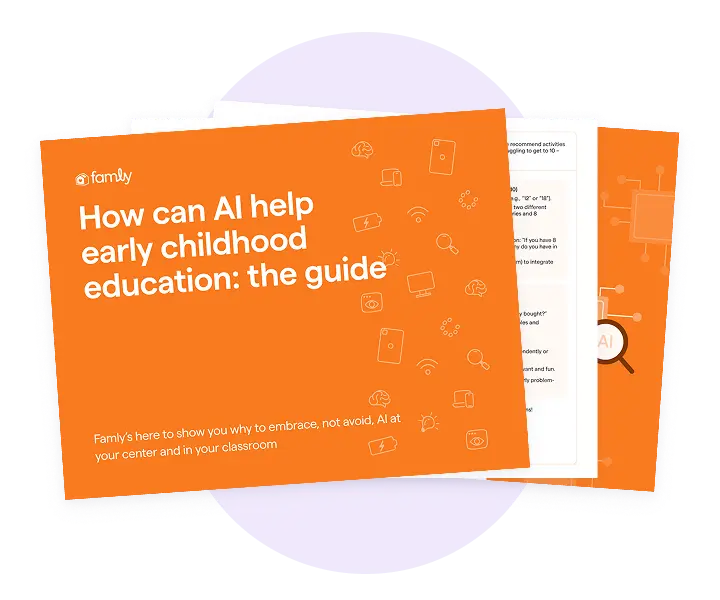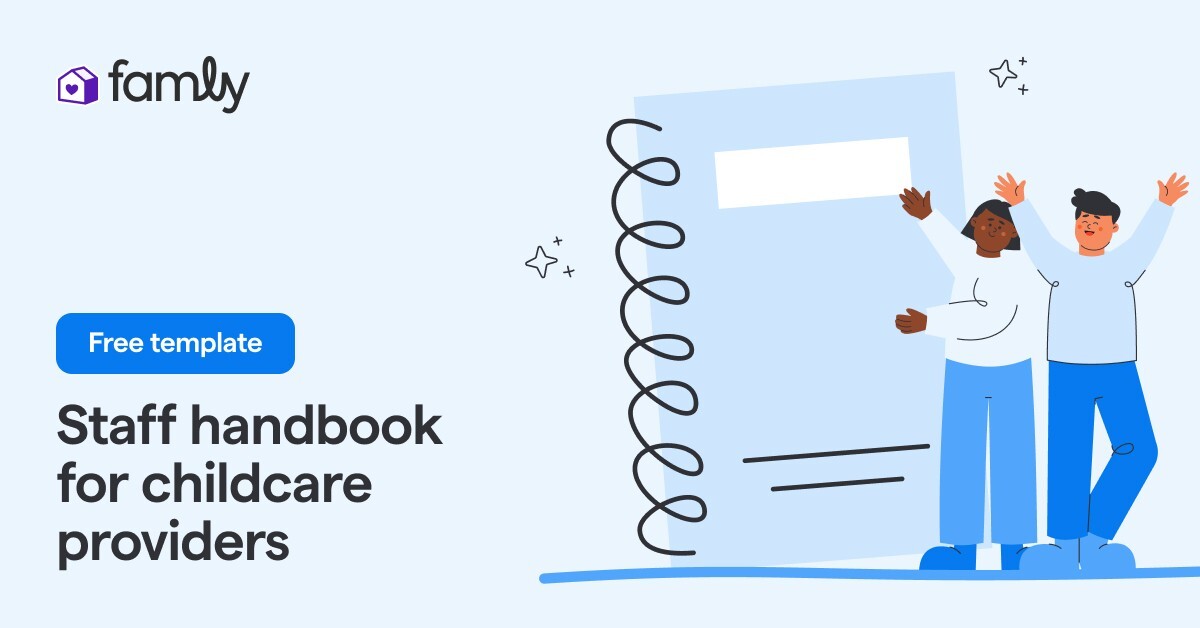settings
children
With Famly since
We hear it a lot. Hiring teachers for childcare centers is hard.
At the end of last year, the team at Famly hosted a local event for Directors in Northern Virginia. I spoke with two directors – one who oversaw a center of more than 200 children, and another who ran an at-home childcare center with just 8 children. Despite their different settings, they both shared the same frustration: hiring a preschool teacher (or multiple preschool teachers) can feel like an endless challenge.
Two completely different types of childcare, same challenges and frustrations.
They mentioned issues such as inexperienced teachers frequently using personal cell phones in the classroom, failing to communicate with the Director, showing up late, or even quitting unexpectedly. Another common concern was that many candidates didn’t approach childcare as a long-term career. Instead, they looked at being a preschool teacher as a temporary solution until they figured out what they really wanted to do.
So let me edit what I originally wrote. Hiring qualified teachers for childcare centers is hard.
While I can’t personally screen or filter your applicants, I can show you a way to save time whenever you do have to hire a new staff member.
And guess what my secret time-saving tool is? AI.
Yep, you read that right, artificial intelligence can help streamline your hiring process.

The typical preschool teacher hiring process
Generally, hiring a preschool teacher or other childcare staff involves the following steps:
- Posting the job
- Initial screening for qualified applicants
- Interviews
- References
- Background checks
- Employment offer
For all of those steps that don’t require federal or local offices, AI is going to be your biggest time saver. Let’s break it down.
Posting the job
Posting a job is not as simple as sharing that you have an open position. It requires a thorough job description, and also, a snapshot of your center’s mission and culture. This helps qualified candidates see why they might want to work with you—and not the center down the street.
How AI can help
AI tools like ChatGPT, Gemini or Claude can be extremely helpful for job descriptions. They will quickly generate and refine job descriptions tailored to your specific role. You give them your must-haves: desired qualifications, responsibilities, and preschool teacher requirements, and they’ll produce a polished first draft in seconds.
Plus, if you let the AI tool know what state you are located in, it will include common state regulations and requirements.
Where your expertise and human knowledge are still needed
These AI tools are great for getting the job description started and including the more basic need-to-haves and common requirements. However, you will likely have to tweak and edit the generated job description, so that it fits your center’s specific needs.
For example, how many years of experience do you require? Do you have a specific curriculum? You will always have to double check that your center’s and state’s requirements are accurately described.
Also, you are the expert in your center’s environment, team and community. Only you can reflect your center’s values, and can truly share how special the families, children and other team members are at your center. No AI tool can encompass just how special the community that you have is.
Initial screening
In this step of the process, you or a member of your leadership team looks through applications to see if any qualified applicants stand out. For instance, do they meet the written preschool teacher requirements, have the right certifications, or match your desired years of experience?
But a new twist in today’s AI world? Applicants might use AI tools to write or polish their resumes and cover letters. And honestly? That’s not always a problem, if they’re editing it to accurately reflect their real qualifications.
The big ideas

How AI can help
Believe it or not, AI can help you detect AI.
There are tools like Undetectable and Grammarly where you can paste text and it will let you know how likely it is that it was written by a bot (AI). These tools look for patterns in the writing that may not feel as authentically human.
For instance:
- Perplexity: How predictable or “surprising” is the text?
- Burstiness: How complex are the sentences? Is there variety in the complexity of the sentences?
- Style and tone: Is the same sentence structure used over and over? Is the tone formal or flat with not many idioms or personality?
- Coherence: Does the text flow in a natural way? Are there any awkward gaps or subject changes?
Where your expertise and human knowledge are still needed
No detection tool is perfect. Ultimately, you’ll want to read applications yourself to gauge personality, authenticity, and whether the candidate aligns with your center’s culture. Trust your gut – it’s usually right! (And your gut is innately human. No bot can have that same “gut feeling’ – or any feeling at all for that matter!)
If you do suspect that AI has been overly used for a resume and cover letter, you can still decide to invite that candidate to an interview. Then you can tailor your questions to determine their level of expertise based on their in-person answers.

Interviews
Interviews are a great way to really get to know the person. No need to worry about whether the person or a bot is steering the conversation! While interviews are conversational, AI tools can help you prep, and maybe even debrief, if you feel the need.
How AI can help
Open up ChatGPT (or any other AI chat tool) and input your job description, your requirements, and what you look for in a candidate. Then, ask what questions it recommends to ask during the interview.
This is a great way to make sure you cover the basic questions, and also helpful inspiration for any “extra” questions.
Also, let’s say you have conducted multiple interviews, and are stuck weighing the pros and cons of the various candidates, who you could argue are all qualified. If a colleague isn’t around to discuss, or if you can’t talk about it with other staff for confidentiality purposes, AI is a great place to debrief – and it won’t go telling other staff about the conversation!
Tell ChatGPT your reasons for liking the candidates, what you’re hesitant about and ask AI what they would do in this situation. It won’t consider the emotional connection you’ve had with the candidates, and sometimes that’s just what you need, a third-party with no connection to the people or the result who can just give you the facts.
Where your expertise and human knowledge are still needed
Again, AI does not know your center, your team or your community. While it will make sure you ask all the required, common questions, it might not give you questions that will help you really get to know the candidate and if they are the right fit for your center.
You’ll have to add a personal touch to the AI-generated questions to make sure you feel like you know the candidate on a more personal, genuine level – and not just strictly facts on their professional history. Is play-based learning important to you? ChatGPT doesn’t know that, so you’ll have to make sure to add a question about their experience with play-based activity and lesson planning.
You’ll have to make sure you add questions that reveal the candidate’s teaching style, personality, and values to make sure they align with your team, children, and families.

Reference and background checks
Official background checks like state-mandated fingerprint checks or criminal-record searches are the most accurate when using the traditional tools – authorized, federal or state databases. There’s just no replacing these legally required checks when it comes to safety.
How AI can help
Still, AI can be helpful to checking written references just like it can be used for initial screenings— using an AI tool to detect how likely it is that the reference was written by AI.
Where your expertise and human knowledge are still needed
But, also just like for initial screenings, you should read through the references yourself and check if the writing and tone feels authentic and human to you. Ultimately, you have to make the final decision if it feels like a personal reference, someone who worked closely with that person, or is it likely written by a bot?
Of course, this is where phone call references can be helpful too!
Employment offer
How exciting! You found someone who fits your center’s vibe and meets your preschool teacher requirements!
How AI can help
Drafting an employment offer can be time-consuming. AI can produce a polished template, including standard wording around duties, salary, or start date. This gives you a great head start.
Where your expertise and human knowledge are still needed
Of course, you will have to make sure practical information like the salary and starting date is all correct.
Also, since this is a legal document, the language must be reviewed carefully. Ensure it meets state or federal regulations and accurately reflects your center’s policies—everything from benefits to disclaimers. AI doesn’t replace legal counsel or HR expertise!
Again, AI is not an end-all-be-all. It’s a jumping off point, but you will always have to do the final touches and edits.
AI is the passenger, you’re still the driver
I can’t help filter the candidates that apply to be a teacher or staff member at your center. So unfortunately, you may still feel like you are constantly hiring. However, I hope I’ve demonstrated how AI tools can help make that hiring process be a little less time-consuming and a little bit more streamlined.
With that said, you are the expert, and you are the person who will be working with the person you are hiring – not the bot (think of it as a helpful passenger who reads the map while you keep your eyes on the road). So it’s most important that you connect and feel like they are a great fit for your center, children and community.
So, yes, hiring a preschool teacher still requires the director to do some heavy lifting, but leveraging AI for job descriptions, screening, and interview prep can save you hours.
Just remember: you are the real expert on your center, your children, and your unique community. Let AI handle the busywork, but you always get the final say!
At Famly, we strongly believe in the potential of AI in early childhood education, but we are adamant that AI can never – and should never – replace the remarkable work you do each day.
Free staff handbook template
I’m not an AI tool, but I do love sharing time-saving resources for childcare professionals so they can focus on what’s most important (and most fun for them!): teaching and engaging with the little ones.
That’s why I created a free, downloadable, and editable Staff Handbook template, to make sure your new hires are set up for success from day 1.
It’s a tedious project, but extremely important to build a cohesive and supportive team, so I wanted to make it a little less time-consuming.
Get it here!

Leave language barriers behind
Bring your multilingual community closer with an in-app live translation tool with over 130 languages.
Learn how live translation works






.jpg)

.webp)
